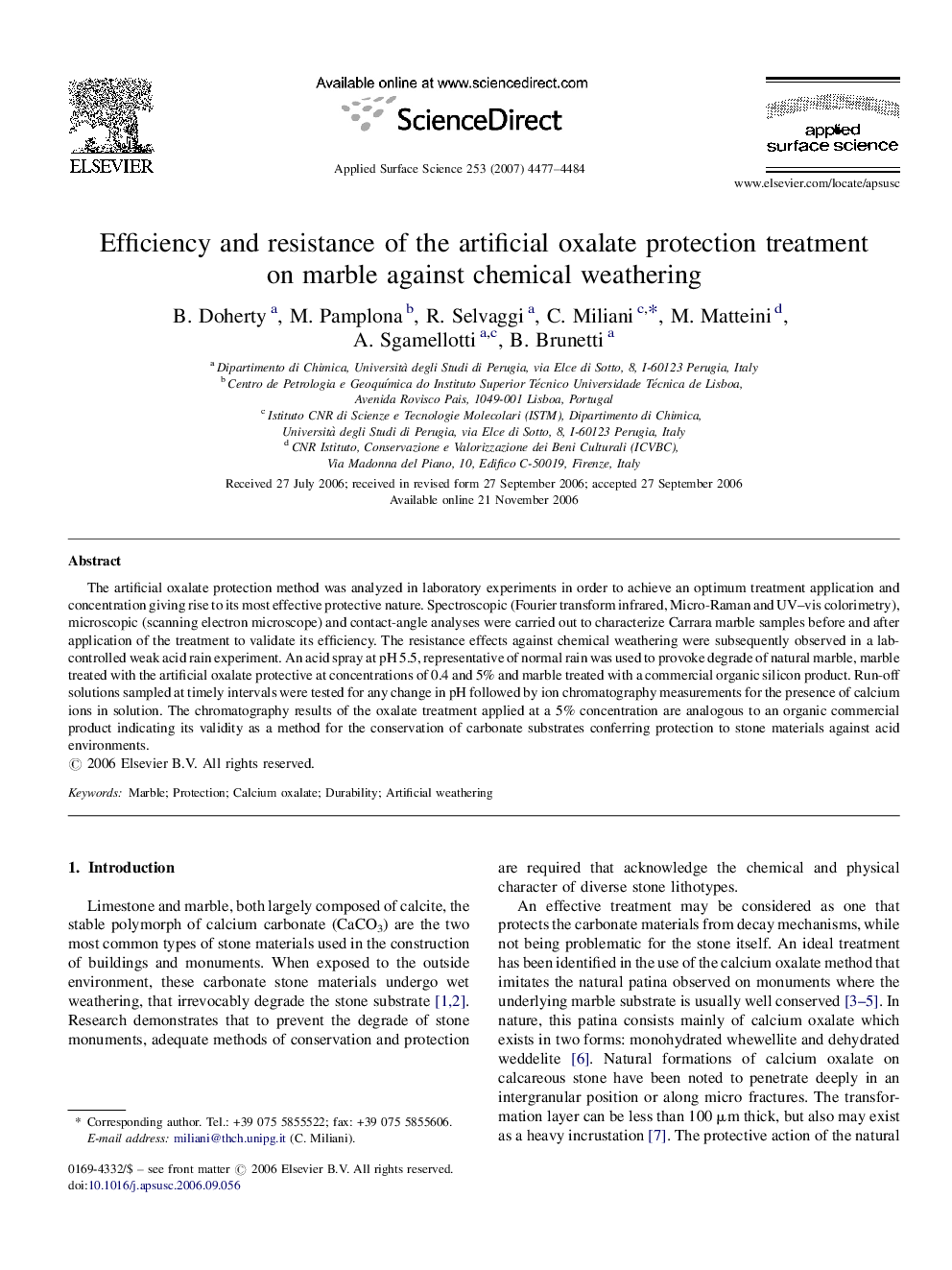| Article ID | Journal | Published Year | Pages | File Type |
|---|---|---|---|---|
| 5365998 | Applied Surface Science | 2007 | 8 Pages |
The artificial oxalate protection method was analyzed in laboratory experiments in order to achieve an optimum treatment application and concentration giving rise to its most effective protective nature. Spectroscopic (Fourier transform infrared, Micro-Raman and UV-vis colorimetry), microscopic (scanning electron microscope) and contact-angle analyses were carried out to characterize Carrara marble samples before and after application of the treatment to validate its efficiency. The resistance effects against chemical weathering were subsequently observed in a lab-controlled weak acid rain experiment. An acid spray at pH 5.5, representative of normal rain was used to provoke degrade of natural marble, marble treated with the artificial oxalate protective at concentrations of 0.4 and 5% and marble treated with a commercial organic silicon product. Run-off solutions sampled at timely intervals were tested for any change in pH followed by ion chromatography measurements for the presence of calcium ions in solution. The chromatography results of the oxalate treatment applied at a 5% concentration are analogous to an organic commercial product indicating its validity as a method for the conservation of carbonate substrates conferring protection to stone materials against acid environments.
